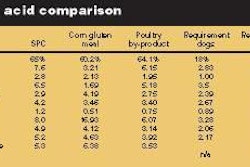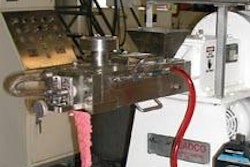
What can we do to make 2006 a profitable and productive year? Here are 20 ideas that can make the next 12 months turn out better than you might imagine:
1. Focus on saving money for customers. Use this theme to brand your business. Be known for coming up with solutions that reduce costs without compromising quality. If it isn't necessary or correct, don't let them buy it. If it isn't right, advise against it: "Do you really want to do that?"
2. Be the consultant. This isn't about gimmicks or ruses. It isn't using a title on a business card to mask that you're in sales. And this isn't so-called "consultative selling." It means being thoroughly knowledgeable about a customer's business so you can be candid and offer workable options that may or may not be related to what you sell. As a by-product, this is perhaps the best way to earn respect.
3. Offer ways to save time. While price is always important, saving time can be equally so. It translates into reducing costs. Make sure your customers recognize the time-saving benefits of what you're selling.
4. Stay closer to customers. Customer contact is changing as companies deal with higher gasoline and travel costs. Develop a schedule for all types of planned contactsphone conferences, direct mail, E-mail and in person. This is more important than ever since the competition is on the prowl. Large companies are looking to attract long-ignored smaller customers, for example. You need to be there.
5. Focus on differentiation. There's danger ahead when we allow our products and services to look like everyone else's. Do battle to avoid anything you sell being perceived as a commodity by giving products and services a unique identity.
6. Keep the CEO out of marketing. Top management controls the budget, so its buy-in is necessary when it comes to marketing. But the top brass can also present a problemthey tend to view everything through company eyes and have a particularly difficult time thinking like a customer. It's only natural, since the company is their mission. Make sure you have a capable marketer available to help the CEO understand the role of marketing.
7. Don't get distracted. This is the year to stay on course. That means focusing on performance, getting everything right. While new ideas are exciting, they can be dangerous if they distract from getting the job done.
8. Plan and execute. Talking doesn't make it so; simply saying "yes" doesn't necessarily get the job done. Make this a priority: Who's going to do what to whom and when? Poor performance results from poor planning.
9. Take advantage of your expertise. Every business has more expertise than it realizes. Pick out two or three niche markets where you have several customers, and brand your company as the "go to" people for each one. Create specialized letterhead, business cards, direct mail and other marketing materials such as a dedicated website for each segment. Put your expertise to work where it works best for you.
10. Take advantage of direct mail. Forget about all those E-mail and fax "blasts." Make sure E-mails are personalized and focused on the recipients. The goal is to connect with the right customers. While "blasting" is easy and cheap, it rarely delivers expected results. Direct mail takes planning and careful execution, but you can hit the right customers.
11. Update corporate identity. You want customers and prospects to give you a second look. Attract attention by selecting compelling colors and a logo design that sends the message that your company is energized. Use this as an opportunity to re-affirm your core message.
12. Prospect systematically. Most so-called "prospecting" is random and dependent on luck rather than carefully planned, properly-executed and consistent efforts. Efficiency and sales growth depend on year-round prospect development. Since buying decisions take longer and longer today, cultivating a minimum of several hundred prospects at all times is necessary.
13. Marketing precedes selling. "The goal of marketing is to make selling superfluous," stated the legendary Peter Drucker. Failure to create a buying environment through marketing makes getting sales feel like pushing boulders up a mountain.
14. Ask customers what they want and give it to them. It isn't just the wrong movie that keeps the theater seats empty, it's the wrong venue. Why go out to see an expensive movie, eat pitiful popcorn and walk on a sticky floor, when you can relax at home and watch a movie on a brilliant, sharp flat screen on the wall? Why not answer an E-mail in real time with a BlackBerry rather than waiting to get back to the office to check your E-mail? Why not let consumers listen to the music they want when they want it on the cheap? Give them an iPod nano.
15. Cut the nonsense. Knock off the hype and all the corporate jargon. Telling it simply and clearly captures attention. Forget about using the latest titles; they're self-serving and no one cares. Get off the kick of trying to impress people; then you'll have plenty of time to hone a compelling 30-second speech on why a customer should do business with you.
16. Knowledge-based relationships. It's slow to sink in, but the revolution is here: Knowledge-driven business relationships are where it's at today. Knowledge-based business relationships are critical to sales success.
17. Avoid overload. Don't pile the plate so full that it loses its appeal. Tantalize customers and prospects with one benefit, one concept or one opportunity at a time. If you're doing direct mail, plan the campaign so you can showcase one facet at a time. Don't try to tell the whole story in a single letter. Let the story unfold in a series of letters. In the same way, plan several sales calls before trying to close the deal.
18. Persistence is power. Salespeople know decisions are delayed and often drawn out over months (and sometimes even years); so you'd better be there when a prospect is ready to buy. Fourteen years after giving a seminar, a marketing executive received a call from a salesperson who had attended the session and received the marketer's newsletters over the years. What followed was a meeting with the company's VP to plan a marketing effort.
19. Use technology to the fullest. Technology wins. The issue isn't whether a person answers the phone, it's making it easy for someone to contact you. Call forwarding from the office to a cell phone sends the right message. One of the best ways to compete with large corporate competitors is to push the technology. No salesperson should be without a laptop with a cell phone connection, a BlackBerry or both. More and more, customers expect real-time responses.
Salespeople who do it now, get the business. At the top of the list should be a customer relationship management system that automates sales activity and prospect cultivation. ACT!, Maximizer and GoldMine are versatile and powerful. From a service perspective, call centers have evolved and are virtually transparent to the customer. If it makes it easy and convenient for the customer, it passes the test.
20. Business isn't warfare. It's easy for the competitive spirit that drives business to get misdirected. It's less about beating the competitor and more about getting and keeping customers. In some ways, this is a far more difficult and less exciting task, but nevertheless, it's the really important one. In fact, business consultant Gary Hamel holds that the task is to move away from the competition. That's what differentiation is all about and why IKEA is so successful.
There seems to be indications that 2006 may hold some surprises, one of which is a more serious and focused business mindset. These 20 guidelines can help you get even more than you expect from the year ahead.
















